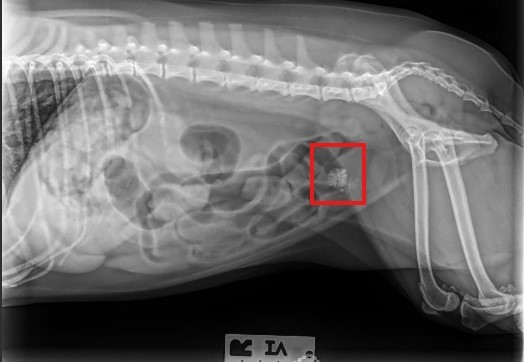Blog
Bladder Stones
Case Overview
Onyx, a 6 yr old, Shih Tzu female spayed, dog presented for a routine exam and lab work. Elevated white and red blood cells, as well as large numbers of calcium oxalate crystals were identified in her urine. Antibiotics did not resolve this, and X-rays taken identified the presence of bladder stones. Medical management using a calculytic diet was attempted unsuccessfully. Surgery was subsequently performed and stones removed via a cystotomy.
What are Bladder Stones ?
These are clumps of minerals and other materials that form in the bladder. There are 4 main types of stones (struvite, oxalate, urate and cystine) which form for a variety of known, and unknown reasons. They vary in size and quantity and can cause inflammation of the bladder lining, resulting in infection and discomfort. This can affect both dogs and cats.
What should I look for?
Symptoms of bladder stones include blood in urine, straining when urinating, urinary accidents in the house, dribbling urine, and frequent licking of the vulva/prepuce.
What to do?
Schedule an appointment with your veterinarian. Diagnosis requires a radiograph or ultrasound of the bladder. Your veterinarian will discuss medical and surgical treatment options based on your pet’s history, symptoms, the size, number and location of stones.







